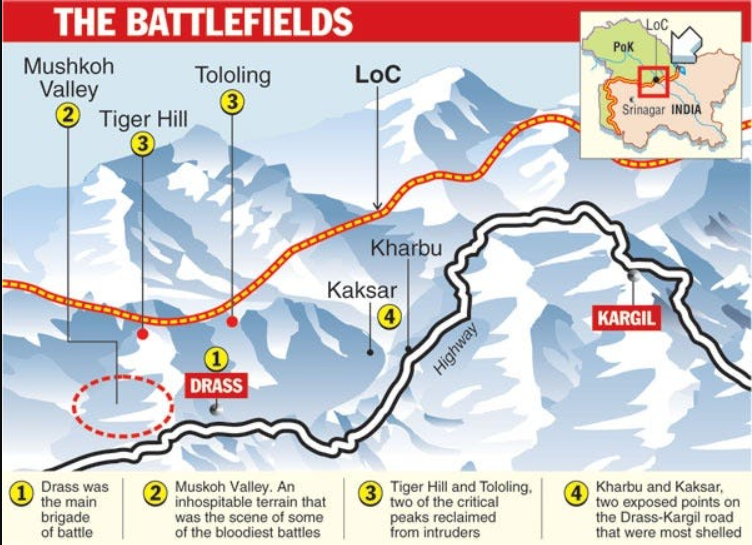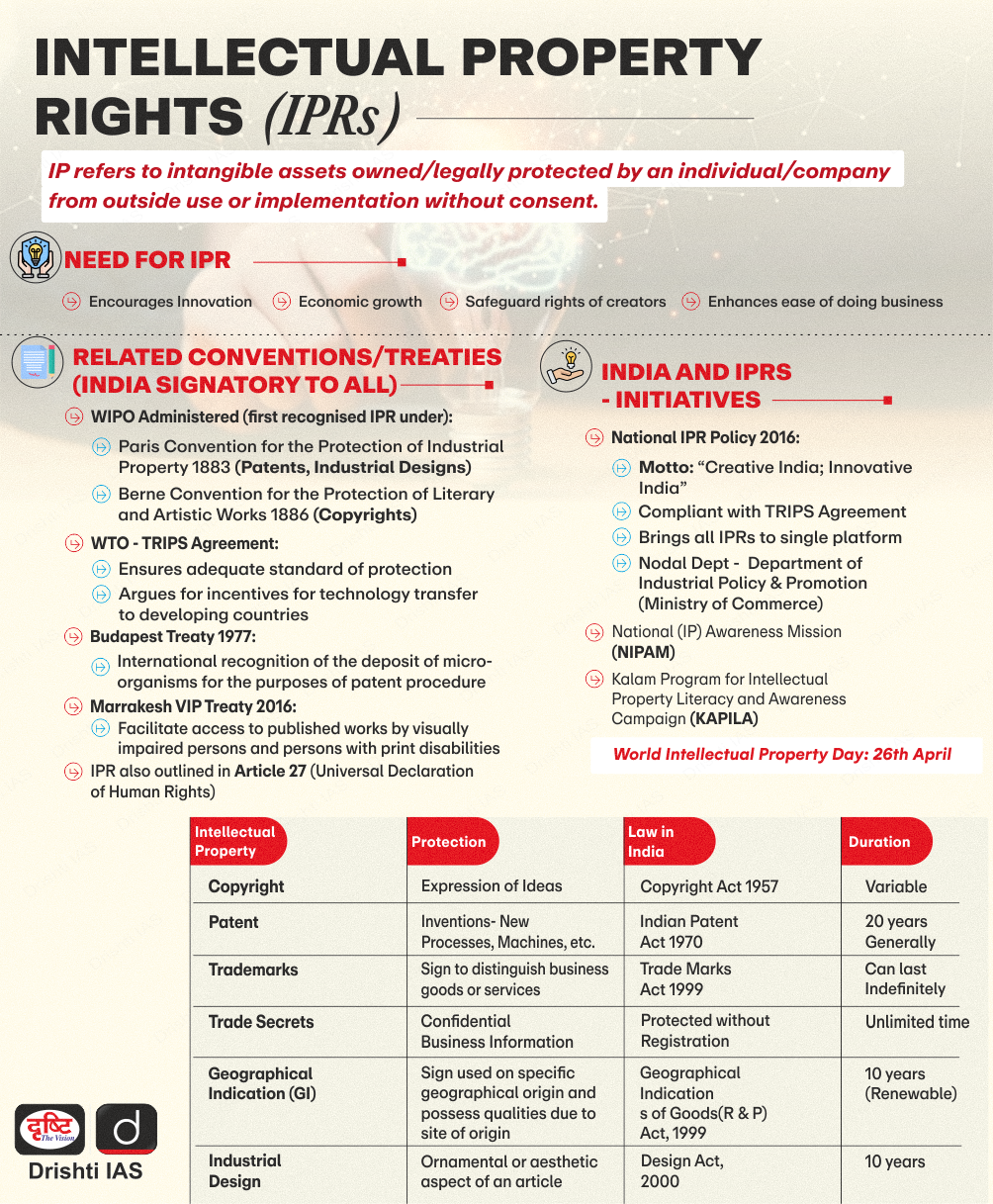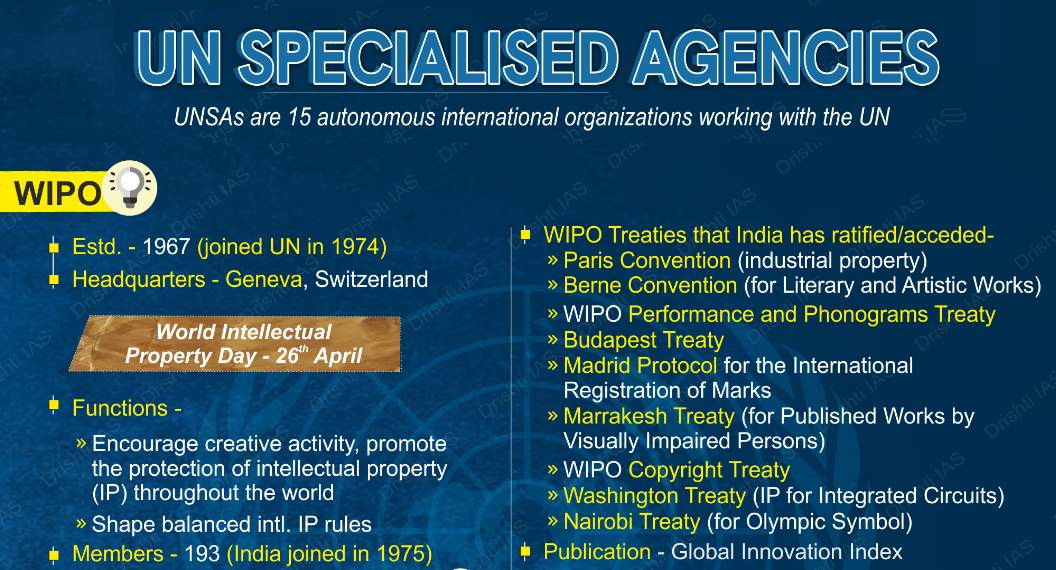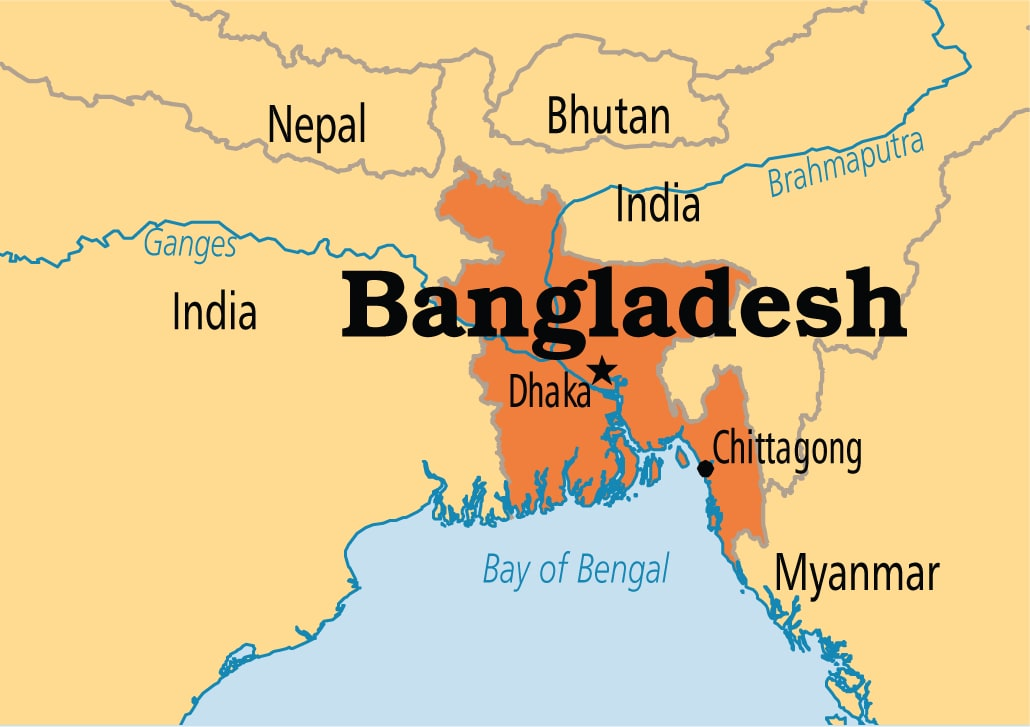Indian Economy
Harnessing AI and New Energy for Economic Growth
For Prelims: Artificial Intelligence (AI), Ethical AI, Machine Learning, Large Language Models, Global Partnership on Artificial Intelligence, Artificial Intelligence Mission
For Mains: Artificial Intelligence (AI), Viksit Bharat 2047, AI Stack, Data Colonization, Data Sovereignty, Digital Public Infrastructure (DPI), Production-Linked Incentives (PLI), FAME India Scheme
Why in News?
Over the last decade, India's GDP has nearly doubled to USD 3.5 trillion, reflecting its status as one of the world’s fastest-growing major economies.
- To further enhance growth and competitiveness, it is crucial to prioritise Artificial Intelligence (AI) and new energy technologies that can transform the entire economy.
What Are the Key Emerging Sectors for India’s Economic Growth?
- Building India’s Own AI Stack: While India’s economy has digitised significantly, its compute penetration remains low. Despite huge success in Information Technology (IT) services, they represent just 1% of the USD 30 trillion global technology industry.
- On the other hand global competitors like China have rapidly accelerated investments in AI, pouring hundreds of billions into research, infrastructure and talent.
- India’s approach to AI must leverage its core strengths across data, compute and algorithms.
- Data Colonisation: It refers to the control and exploitation of data resources by foreign entities, raising concerns about data sovereignty and national security. India generates 20% of the world’s data, yet 80% is stored offshore, processed into AI and imported back in dollars.
- India must reverse this trend by leveraging its Digital Public Infrastructure (DPI) to create privacy-preserving datasets.
- India can build on its DPI success (Unified Payments Interface(UPI), Unique Identification Authority of India (UIDAI), Open Network for Digital Commerce (ONDC) ) to create the world’s largest open source AI, grounded in Indian ethos.
- Compute Infrastructure: In terms of compute infrastructure, India currently has only 1GW of data centre capacity, while the global capacity is 50GW.
- By 2030, projections indicate that the US will reach 70GW, China will achieve 30GW, and India will attain 5GW if it continues on its current path.
- To achieve AI leadership, India needs rapid AI adoption, data localisation norms, incentives for global computing companies, and Production Linked Incentive (PLI) Schemes for data centres. Deploying 50GW by 2030 will require USD 200 billion in capital which is an ambitious but achievable goal.
- India is the world’s largest hub for silicon development and design talent, yet it lacks Indian-designed chips. It needs industry-led chip design projects and government incentives through research linked incentive schemes.
- R&D on Algorithms: As AI research becomes increasingly closed and proprietary, India has a unique opportunity to become a global champion of open innovation in AI Research and Development (R&D).
- India can achieve this by attracting world-class talent and the best scientists to work in India, providing industrial-scale resources for research and offering government incentives for AI R&D.
- By creating a globally leading open innovation platform for AI, India can position itself at the forefront of AI advancement while ensuring that its values and perspectives shape the future of this transformative technology.
- New Energy Supply Chains: The new energy paradigm is shifting from mining and refining of fossil fuels to advanced material sciences, particularly for critical minerals like lithium. This transition is reshaping the global energy landscape, and India must position itself at the forefront of this revolution.
What are the Three Pillars of New Energy Ecosystem?
- The new energy ecosystem rests on three pillars:
- Renewable Energy (RE) Generation: India’s RE capacity has grown from 72GW in 2014 to over 175GW in 2023, with solar capacity rising from 3.8GW to more than 88GW.
- However, India still lagged behind global leaders. In 2023, China deployed 215 GW of solar energy capacity, while India installed only 8 GW. To meet its 500 GW target by 2030, India needs to significantly ramp up its focus on renewable energy deployment.
- Renewable Energy (RE) Generation: India’s RE capacity has grown from 72GW in 2014 to over 175GW in 2023, with solar capacity rising from 3.8GW to more than 88GW.
- Battery Storage: For renewable energy to be truly effective, India must couple it with a robust battery storage solution Currently, its battery storage production capacity is only 2GWh, compared to China’s 1,700GWh.
- To power its RE grid and achieve 100% EV adoption, India needs to aim for 1,000GWh capacity. This significant increase in battery storage will not only support its RE goals but also drive down costs and improve energy accessibility across the country.
- EV Sector: In the EV sector, India’s current auto penetration is less than 200 vehicles per 1,000 people, with 2 million EVs sold annually compared to China’s 30 million.
- By 2030, India should aim to become the world’s largest EV market, potentially producing 50 million EVs.
- This shift will create a cleaner environment, lower transport costs for consumers and reduce the economy’s overall logistics expenses.
- At present, 90% of the new energy ecosystem—encompassing solar production, lithium cell manufacturing, midstream processing, and EV production—is concentrated in China.
- By building its own technologies and supply chains, India can make its economy more energy-efficient and create tens of millions of future-ready jobs.
- This transition will secure its energy independence and position it as a key player in the global fight against climate change. India’s path to global leadership lies in mastering these technologies of the future.
India's Initiatives Related to Emerging Sectors
- Building India’s Own AI Stack:
- Compute Infrastructure:
- National Supercomputing Mission (NSM)
-
Cloud Computing Initiatives like Digilocker
What Are the Challenges and Potential Solutions in These Emerging Areas?
| Challenges | Way Forward |
| Infrastructure Gap |
|
| Talent Acquisition and Retention |
|
| Data Privacy and Security |
|
| Financial Constraints |
|
| Supply Chain Vulnerabilities |
|
| Policy and Regulatory Environment |
|
| Technological Complexity |
|
Conclusion
As India celebrates its political freedom gained in 1947, the goal for 2047 should be to achieve technological freedom. India must develop a unique playbook for technological advancement, addressing its specific challenges and leveraging its strengths, using technology not only for economic growth but also for societal transformation.
|
Drishti Mains Question: Q. ‘India is actively working to enhance its technological and infrastructural capabilities across several key sectors.’ Comment. |
UPSC Civil Services Examination, Previous Year Question (PYQ)
Prelims
Q1. With the present state of development, Artificial Intelligence can effectively do which of the following? (2020)
- Bring down electricity consumption in industrial units
- Create meaningful short stories and songs
- Disease diagnosis
- Text-to-Speech Conversion
- Wireless transmission of electrical energy
Select the correct answer using the code given below:
(a) 1, 2, 3 and 5 only
(b) 1, 3 and 4 only
(c) 2, 4 and 5 only
(d) 1, 2, 3, 4 and 5
Ans: (b)
Mains:
Q. What are the main socio-economic implications arising out of the development of IT industries in major cities of India? (2022)
Q. “The emergence of the Fourth Industrial Revolution (Digital Revolution) has initiated e-Governance as an integral part of government”. Discuss. (2020)

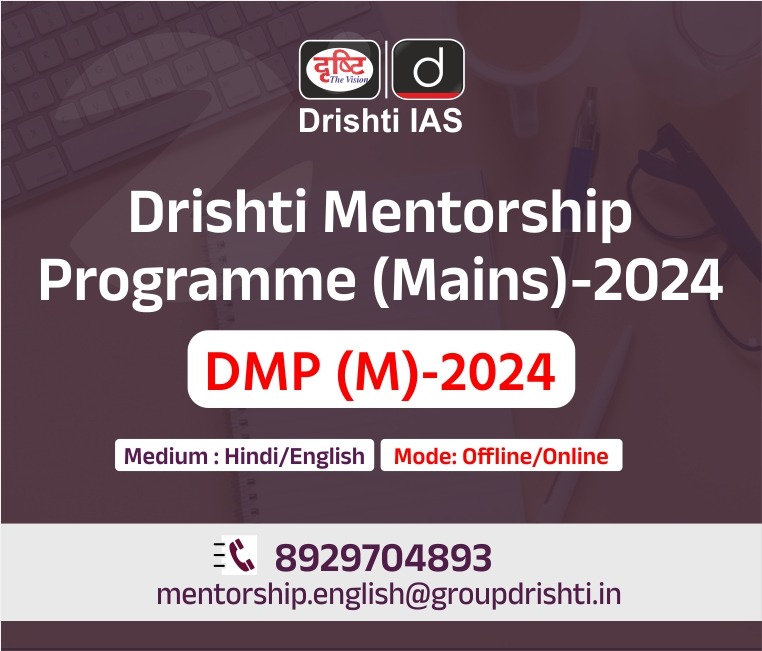
Indian History
Kargil Vijay Diwas
For Prelims: Kargil Vijay Diwas, Kargil War, Nuclear States, Siachen Glacier, Lahore Declaration, Kashmir Conflict, Line of Control (LOC), Operation Vijay, Operation Safed Sagar, Operation Talwar, Kargil Review Committee (KRC), Cold Start Doctrine.
For Mains: Significance of Post-Independence Developments in India’s Neighbourhood and their Impacts.
Why in News?
Kargil Vijay Diwas is celebrated every year on July 26 to pay tribute to the bravery of Indian soldiers who made the ultimate sacrifice for the country during the Kargil War (1999).
- This event marks the conclusion of the Kargil War between India and Pakistan that started in May 1999.
What is Kargil Vijay Diwas?
- About: Kargil Vijay Diwas, or Kargil Victory Day, is a significant day observed annually on July 26 in India.
- The day commemorates India's triumph in the 1999 conflict with Pakistan and honours the bravery and sacrifices of Indian soldiers during the war.
- The Kargil war of 1999 was the first military confrontation in a nuclearized SouthAsia, and arguably the first real war between two Nuclear States.
- Background:
- India and Pakistan have a history of conflicts, including a significant one in 1971 that led to the creation of Bangladesh.
- Post-1971, both nations faced ongoing tensions, particularly vying for control over the Siachen Glacier through military outposts on nearby mountain ridges.
- In 1998, both countries conducted nuclear tests, escalating tensions. The Lahore Declaration in February 1999 aimed to resolve the Kashmir conflict peacefully and bilaterally.
- During the winter of 1998-1999, Pakistani armed forces covertly trained and deployed troops across the Line of Control (LOC) to seize fortified positions overlooking NH 1A in the Drass and Batalik Sectors of Kargil, Ladakh.
- Indian troops initially mistook the infiltrators for terrorists or 'jihadis,' but it soon became clear that the attack was a well-organised military operation.
- It was fought in the summer of 1999 along a 170km mountain frontier, stretching from Mashkoh Valley to Turtuk in the Kargil sector,
- In response, India launched Operation Vijay, deploying over 200,000 troops to the region to counter the incursion.
- Significance of Kargil War Diwas:
- Since 1999, July 26 has been observed as Kargil Vijay Diwas to remember and honour the supreme sacrifices made by Indian soldiers during the war.
- The Kargil War memorial in Dras was built in 2000 by the Indian Army to commemorate the success of Operation Vijay in 1999.
- It was later renovated in 2014. It is also known as the "Dras War Memorial" due to its location in the town of Dras in the Kargil district of Jammu and Kashmir.
- The National War Memorial, inaugurated in 2019. It is dedicated to soldiers who sacrificed their lives in various conflicts and missions, including the Sino-Indian war in 1962, Indo-Pak wars in 1947, 1965, and 1971, Indian Peace Keeping Force Operations in Sri Lanka 1987-90, and the Kargil Conflict in 1999.
- Impact of Kargil War:
-
Global Recognition of the Line of Control (LoC): The international community largely recognized the LoC as the de facto border between India and Pakistan, reinforcing India's stance on the territorial integrity of Jammu and Kashmir.
-
Strengthened Strategic Partnerships: Kargil also marked the turning point in Indo- US relations. India was regarded as a responsible nuclear actor in the international arena leading to the next step in Strategic Partnership, culminating in the Indo-US Nuclear Deal.
-
Diplomatic Gains: The war placed significant diplomatic pressure on Pakistan, culminating in a high-profile visit by Pakistan’s Prime Minister Nawaz Sharif to the U.S. on July 4, 1999, where he faced strong criticism from the US President. This international condemnation of Pakistan’s actions helped isolate it diplomatically.
- Highlighting Nuclear Diplomacy: The conflict brought global attention to the volatile relationship between India and Pakistan, especially concerning nuclear risks. The war underscored the potential for conflict escalation in a nuclear-armed region.
- Impact on Global Perception: The war highlighted India’s military capabilities and its ability to effectively manage and respond to regional conflicts, enhancing its global stature as a rising power with robust defence capabilities.
-
Operations Associated with the Kargil War
- Operation Vijay: Operation Vijay was the code name for India's military response to the Pakistani incursion in the Kargil region.
- The operation aimed to clear the infiltrators from the Indian side of the Line of Control (LOC) and restore the status quo.
- Operation Safed Sagar: The Indian Air Force conducted "Operation Safed Sagar" to support ground operations. High-altitude operations involved aircraft like MiG-21s, MiG-23s, MiG-27s, Mirage 2000, and Jaguars.
- Operation Talwar: The Indian Navy’s "Operation Talwar" ensured maritime security and deterrence. The Navy's readiness sent a strong message to Pakistan about potential responses to further aggression.
What Reforms were Undertaken After the Kargil War?
- Security Sector Reforms: The Kargil War prompted a review of India’s National Security Structure, leading to increased transparency and the establishment of the Kargil Review Committee (KRC) led by K Subrahmanyam. The KRC report highlighted deficiencies in intelligence, border, and defence management, leading to significant security sector reforms and institutional changes.
- Creation of the Chief of Defence Staff (CDS): It was created to promote "jointness" among the Army, Navy, and Air Force.
- The CDS acts as the single-point military advisor to the government and oversees the integration of the three services.
- Establishment of Tri-Service Commands: Andaman and Nicobar Command was created as a test-bed for future theatre commands, integrating resources from the Army, Navy, and Air Force.
- Intelligence Reforms: National Technical Research Organisation (NTRO) was established to enhance technical intelligence capabilities.
- Defence Intelligence Agency (DIA) was formed to coordinate intelligence across all three services.
- Technical Coordination Group was created to oversee high-tech intelligence acquisitions.
- National Security Advisor (NSA) was designated as the coordinator of all intelligence agencies, supervising the NTRO and ensuring better intelligence integration.
- Border Management Enhancements: Improved surveillance and patrolling along the borders to prevent incursions. Deployment of better technology for border security. E.g., installation of thermal imaging cameras, motion sensors and radar systems.
- Operational Reforms: Weapon systems, artillery, and communication equipment were modernised. Increased focus on specialised training for high-altitude warfare and joint operations. E.g., Dhanush Artillery Gun, Akash surface-to-air missile etc.
-
Improved Coordination and Communication: Emphasis was put on joint exercises and operations among the Army, Navy, and Air Force to ensure better coordination. Enhanced mechanisms were established for real-time sharing of intelligence between different agencies and military branches.
-
Counter-Terrorism Measures: Intelligence Bureau (IB) became the principal counter-terrorism agency. Cunter-terrorism capabilities and coordination among various security agencies were strengthened.
- Indigenous Satellite Navigation System: The space-based navigation system maintained by the US government would have provided vital information, but the US denied it to India. A need for an indigenous satellite navigation system was felt earlier, but the Kargil experience made the nation realise its inevitability. E.g., Development of Indian Regional Navigation Satellite System (IRNSS).
- Doctrinal Changes: The war led to the evolution of Indian military doctrines, including the Cold Start Doctrine. Kargil highlighted the need for a holistic doctrine to address multi-dimensional proxy wars and shaped future military strategies.
Conclusion
The Kargil War of 1999 was a pivotal event for India, significantly impacting its military strategy and national security policies. Operation Vijay's success restored control over strategic areas and strengthened India's defence capabilities. The war highlighted the need for robust security measures and prompted major reforms in national security infrastructure. It reaffirmed the Line of Control (LoC) as an effective international border and accelerated the development of new military doctrines, such as the Cold Start Doctrine. The conflict’s legacy continues to shape India's defence strategies and diplomatic relations.
|
Drishti Mains Question: Q. The Kargil War of 1999 made a significant impact on the regional dynamics of the South Asian region. Discuss. |
UPSC Civil Services Examination, Previous Year Question (PYQ)
Mains
Q.“Increasing cross-border terrorist attacks in India and growing interference in the internal affairs of several member-states by Pakistan are not conducive for the future of SAARC (South Asian Association for Regional Cooperation).” Explain with suitable examples. (2016)
Q.The terms ‘Hot Pursuit’ and ‘Surgical Strikes’ are often used in connection with armed action against terrorist attacks. Discuss the strategic impact of such actions. (2016)
Q.Terrorist activities and mutual distrust have clouded India-Pakistan relations. To what extent the use of soft power like sports and cultural exchange could help generate goodwill between the two countries. Discuss with suitable examples. (2015)

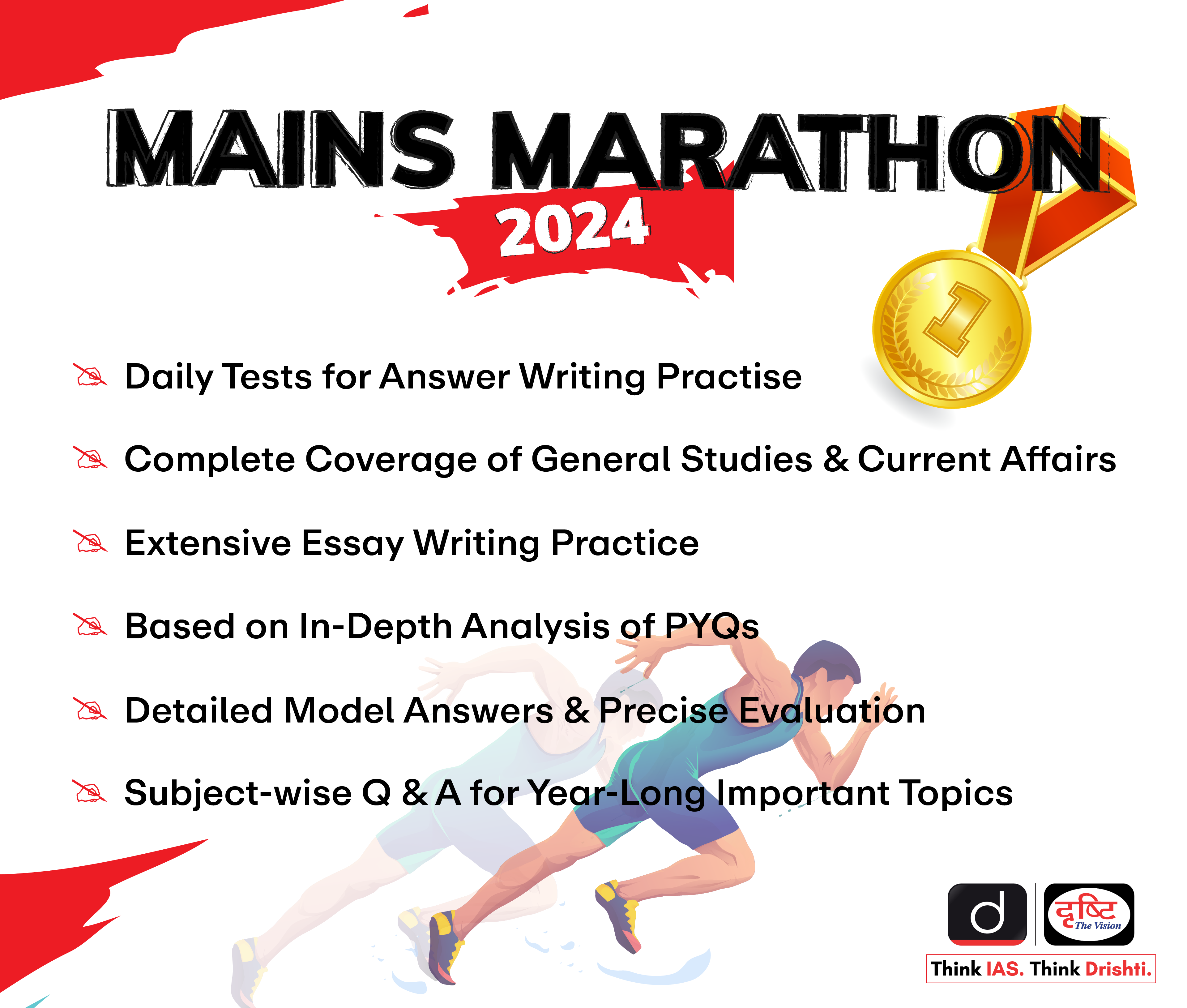
Disaster Management
Climate Change and Impact on Children’s Education
For Prelims: United Nations Educational, Scientific and Cultural Organization (UNESCO), Floods, Droughts, Heat Waves, El Nino,
For Mains: Significance of Government Policies & Interventions to Mitigate Climate Change.
Why in News?
Recently, a new report by the Global Education Monitoring Report of the United Nations Educational, Scientific and Cultural Organization (UNESCO) has highlighted the long-term impact of climate shocks experienced in early childhood.
How does Climate Change Impact Children and Their Education?
- Vulnerability of Children:
- The report says that young children are particularly vulnerable to physical hazards like floods, droughts, and heat waves which can negatively impact physical abilities, cognitive abilities, emotional well-being, and educational opportunities.
- Most low and middle-income countries experience annual school closures due to climate-related events, increasing learning loss and dropout rates.
- Impact on Cognitive Abilities of Children:
- In Ecuador, children exposed to severe El Nino floods in utero were shorter and performed worse on cognitive tests later in life.
- In India, rainfall shocks during early life negatively impacted vocabulary at age 5 and mathematics and non-cognitive skills at age 15.
- Analysis of disasters affecting over 140,000 children in seven Asian countries showed a negative correlation with school enrollment for boys and mathematics performance for girls by age 13-14.
- School Closures and Infrastructure Damage:
- Climate-related stressors cause frequent school closures, with 75% of extreme weather events in the past 20 years resulting in such disruptions.
- Natural disasters, including floods and cyclones, have led to deaths and significant damage to educational infrastructure.
- For instance, Jakarta floods in 2013 disrupted access to schools; Cyclone Idai destroyed 3,400 classrooms in Mozambique in 2019; Tropical Cyclone Gita damaged 72% of schools in Tonga in 2018.
- Floods in Ethiopia, India, and Vietnam caused reductions in educational attainment among youth.
- Impact of Heat and Environmental Variability:
- Heat Effects: Higher-than-average temperatures during prenatal and early life are linked to fewer years of schooling.
- Studies show reduced high school graduation and college entrance rates in China due to heat.
- In Maharashtra, India, drought led to a 4.1% reduction in mathematics scores and a 2.7% reduction in reading scores.
- In Pakistan, children in flooded districts were 4% less likely to attend school compared to those in non-flooded areas.
- Heat Effects: Higher-than-average temperatures during prenatal and early life are linked to fewer years of schooling.
What are the Recommendations of the Report?n
- Need for Adaptation: The report emphasises the need for comprehensive climate adaptation strategies, including improved school infrastructure, curriculum reforms, and community engagement.
- Curriculum Integration: The report underscores the need for incorporating climate change education into school curricula to provide both climate science knowledge and skills in resilience, adaptation, and sustainable development.
- Proactive Measures: To mitigate climate impacts on education, proactive measures are recommended, including strengthening school infrastructure, training educators for psychological and academic support, and promoting community resilience through awareness and adaptation initiatives.
- Investing in Education: There is a call for increased investment in educational systems to enhance their resilience to climate-related disruptions, ensuring continuity of education despite environmental challenges.
What Measures Have Been Taken to Mitigate the Impact of Climate Change?
- Global Level:
- Paris Agreement: Aims to limit global warming to below 2°C with national climate targets and $100 billion annual climate finance support.
- UNFCCC: Facilitates global climate negotiations and progress assessments through COP meetings and the Global Stocktake.
- Sustainable Development Goals (SDGs): Incorporates climate action into broader development goals (Goal-13).
- Global Initiatives: Includes partnerships and funding for climate action and clean technologies.
- Steps Taken in India to Mitigate Climate Change
- LiFE Initiative: The idea of LiFE was introduced by India during the 26th United Nations Climate Change Conference of the Parties (COP26) in Glasgow in 2021 to promote an environmentally conscious lifestyle that focuses on ‘mindful and deliberate utilisation’ instead of ‘mindless and wasteful consumption.
- National Action Plan on Climate Change (NAPCC): Features missions on solar energy, energy efficiency, and sustainable habitats.
- Renewable Energy: Targets include 500 GW of solar power and 60 GW of wind energy by 2030.
- Electric Mobility: Promotes electric vehicles to cut transportation emissions.
- Adaptation and Resilience: State-specific action plans and disaster management enhancements.
- Afforestation: Green India Mission and large-scale tree planting initiatives.
- International Cooperation: Commitment to the Paris Agreement and participation in global climate finance.
|
Drishti Mains Question: Q. Discuss the multifaceted impacts of climate change on schooling in developing countries. Examine how extreme weather events, rising temperatures, and environmental degradation disrupt educational access, quality, and outcomes. |
UPSC Civil Services Examination, Previous Year Question (PYQ)
Mains:
Q. ‘Climate change’ is a global problem. How will India be affected by climate change? How Himalayan and coastal states of India will be affected by climate change? (2017)
Important Facts For Prelims
Letter of Intent between AIM and WIPO
Why in News?
Recently, World Intellectual Property Organization (WIPO) signed a Joint Letter of Intent (JLoI) with Atal Innovation Mission (AIM). The JLoI is aimed at building programs for Innovation, Entrepreneurship & Intellectual Property (IP) for countries in the Global South.
- This partnership aims to enhance understanding and awareness about intellectual property rights (IPR) from the school level and unlock the innovation potential of the world, fostering inclusive and sustainable economic growth.
Note:
- India's Innovation Ecosystem: India has made significant strides in its entrepreneurial journey and is positioned as a global leader in innovation, leveraging its vast talent pool and dynamic market to attract international investments.
- As per the Global Innovation Index 2023 report, India retained the 40th position out of 132 economies featured.
What is Atal Innovation Mission (AIM)?
- AIM, launched in 2016, is Government of India’s flagship initiative set up by the NITI Aayog to promote a culture of innovation and entrepreneurship in the country.
- Its objective is to develop new programmes and policies for fostering innovation in different sectors of the economy, provide platform and collaboration opportunities for different stakeholders, create awareness and create an umbrella structure to oversee the innovation ecosystem of the country.
- Major Initiatives:
- Atal Tinkering Labs: Creating problem solving mindset across schools in India.
- Atal Incubation Centers: Fostering world class startups and adding a new dimension to the incubator model.
- Atal New India Challenges: Fostering product innovations and aligning them to the needs of various sectors/ministries.
- Mentor India Campaign: A national mentor network in collaboration with the public sector, corporates and institutions, to support all the initiatives of the mission.
- Atal Community Innovation Center: To stimulate community centric innovation and ideas in the unserved /underserved regions of the country including Tier 2 and Tier 3 cities.
- Atal Research and Innovation for Small Enterprises (ARISE): To stimulate innovation and research in the MSME industry.
UPSC Civil Services Examination, Previous Year Question (PYQ)
Q. Atal Innovation Mission is set up under the (2019)
(a) Department of Science and Technology
(b) Ministry of Labour and Employment
(c) NITI Aayog
(d) Ministry of Skill Development and Entrepreneurship
Ans: (c)
Q. With reference to the ‘National Intellectual Property Rights Policy’, consider the following statements: (2017)
- It reiterates India’s commitment to the Doha Development Agenda and the TRIPS Agreement.
- Department of Industrial Policy and Promotion is the nodal agency for regulating intellectual property rights in India.
Which of the above statements is/are correct?
(a) 1 only
(b) 2 only
(c) Both 1 and 2
(d) Neither 1 nor 2
Ans: (c)


Important Facts For Prelims
Material for Energy Harvesting and Power Generation
Why in News?
Recently, scientists have come up with a recent study that explores the electronic mechanisms governing chemical bonding in a new class of materials called incipient metals, with a focus on Metavalent Bonding (MVB) within a single 2D layer of Group IV chalcogenides.
What are the Key Highlights of the Study?
- About:
- The study was conducted at Theoretical Sciences Unit at Jawaharlal Nehru Centre for Advanced Scientific Research (JNCASR).
- Findings:
- The study discovered that group IV chalcogenide materials can transition from amorphous to crystalline forms in less than 100 nanoseconds when heated or cooled.
- Significance:
- The new material can have applications in various fields like efficient energy harvesting, and power generation.
- Also, the research connects with the emerging field of quantum materials which will help in India's national mission on quantum technology.
- Related Terms:
-
Incipient Metals:
- They exhibit electrical conductivity similar to metals, with high thermoelectric efficiency characteristic of semiconductors, and unusually low thermal conductivity, creating a triad of properties that cannot be explained by traditional chemical bonding concepts.
- Chalcogenides:
- Chalcogenides are compounds containing at least one chalcogen elemental ion (such as Sulphur, Selenium, and Tellurium) and at least one metallic element.
- Group IV chalcogenides possess intriguing properties making them suitable for technological applications.
- Chalcogenides are important in energy harvesting and power generation due to their high electrical conductivity and effective thermal-to-electrical energy conversion.
- Chalcogenides are already used in computer flash memories, leveraging their ability to change optical properties during transitions between crystalline and amorphous states.
- Chalcogenides are compounds containing at least one chalcogen elemental ion (such as Sulphur, Selenium, and Tellurium) and at least one metallic element.
- Metavalent Bonding:
- The bonding, which defies the classical octet rule (the tendency of atoms to prefer to have eight electrons in the valence shell) in chemistry, has properties of both the bonding present in metals and those found in glasses.
-
UPSC Civil Services Examination, Previous Year Question (PYQ)
Prelims
Q. What is the difference between a CFL and an LED lamp? (2011)
- To produce light, a CFL uses mercury vapour and phosphor while an LED lamp uses semi-conductor material.
- The average life span of a CFL is much longer than that of an LED lamp
- A CFL is less energy-efficient as compared to an LED lamp.
Which of the statements given above is/are correct?
(a) 1 only
(b) 2 and 3 only
(c) 1 and 3 only
(d) 1, 2 and 3
Ans: (c)
Q. With reference to solar power production in India, consider the following statements: (2018)
- India is the third largest in the world in the manufacture of silicon wafers used in photovoltaic units.
- The solar power tariffs are determined by the Solar Energy Corporation of India.
Which of the statements given above is/are correct?
(a) 1 only
(b) 2 only
(c) Both 1 and 2
(d) Neither 1 nor 2
Ans: (d)


Rapid Fire
Olympic Order Awarded to Abhinav Bindra
Recently, the Prime Minister congratulated athlete Abhinav Bindra on being awarded the Olympic Order for his outstanding services to the Olympic Movement.
- The Olympic Order is the highest award from the International Olympic Committee, given to individuals for outstanding contributions to the Olympic movement, recognizing exceptional dedication to promoting the values and ideals of the Olympics.
- Established in 1975, it replaced the Olympic Diploma of Merit.
- The Olympic Order has three grades: gold, silver, and bronze. The gold order is reserved for heads of state and exceptional circumstances.
- Other notable recipients of the Olympic Order include Indira Gandhi and Nelson Mandela.
- The award was presented during the 142nd International Olympic Committee(IOC) Session in Paris.
- The IOC is the guardian of the Olympic Games, established in June 1894. It is a not-for-profit independent international organisation.
- It is based in Lausanne, Switzerland, the Olympic Capital.
- Abhinav Bindra is India’s first individual Olympic gold medallist, who won the men’s 10-meter air rifle event at the 2008 Beijing Games.
Read More: India's Ambitious Bid to Host the 2036 Olympic Games
Rapid Fire
Rashtrapati Bhavan Halls Renamed to Reflect Indian Cultural Values
In a bid to align with Indian cultural values and reduce traces of colonial influence, Rashtrapati Bhavan has officially renamed two of its prominent halls.
- Durbar Hall is now Ganatantra Mandap, reflecting the Republic concept, replacing the colonial term 'Durbar' (courts and assemblies of Indian rulers and the British).
- Ashok Hall has been renamed Ashok Mandap, honouring Emperor Ashoka and Indian cultural significance. This change aims to remove anglicized influences and align with the ethos associated with the word 'Ashok.'
- The Rashtrapati Bhavan statement mentioned that Ashok Hall was originally a ballroom. The word 'Ashok' signifies being free from sufferings or sorrow, and also refers to Emperor Ashok, a symbol of unity and peaceful co-existence.
- The word also refers to the Ashok tree, which holds deep significance in Indian religious traditions, arts, and culture.
- The Rashtrapati Bhavan in New Delhi is the largest residence of any Head of State in the world. It was originally built as the 'Viceroy House' for the British Viceroy of India and later renamed Rashtrapati Bhavan when India became a Republic in 1950.
- It was designed by British architect Sir Edwin Landseer Lutyens, who combined Indian, Mughal, and European architectural styles.
- In 2023, the world-renowned Mughal Gardens at the Rashtrapati Bhavan were also renamed as Amrit Udyan.
- Earlier in 2022, the PM inaugurated the 'Kartavya Path' symbolising a shift from erstwhile Rajpath being an icon of power to Kartavya Path being an example of public ownership and empowerment.
Read More: Kartavya Path
Rapid Fire
Successful Phase-II Ballistic Missile Defence System Test
The Defence Research and Development Organisation (DRDO) has successfully tested its Phase-II Ballistic Missile Defence (BMD) system, showcasing India's advanced capabilities in defending against long-range ballistic missile threats.
- The Phase-II system can intercept ballistic missiles with a range of up to 5,000 km, enhancing India’s strategic defence.
- Phase-I BMD, capable of intercepting missiles with ranges up to 2,000 km, has already been deployed.
- The Phase-II missile is a two-stage, solid-propelled, ground-launched system designed for endo to low exo-atmospheric interception.
- The test demonstrated a network-centric warfare weapon system, including long-range sensors, low-latency communication, and advanced interceptor missiles.
- The Indian Ballistic Missile Defence (BMD) Programme, initiated in 2000 after the Kargil War, aims to protect India from missile threats, particularly from Pakistan and China.
- It employs a multi-layered approach with interceptor missiles like Prithvi Air Defence and Advanced Air Defence. Recent efforts focus on enhancing capabilities through global cooperation and acquiring systems like the Russian S-400 Triumf.
- The DRDO is developing an indigenous multi-tier network to counter missiles with ranges of up to 2000 km and 5000 km in Phases 1 and 2, respectively.
- The network includes surveillance radars for the detection and tracking of incoming missiles.
- Ballistic missiles of India are Agni, K-4 (SLBM), Prahaar, Dhanush, Prithvi and Trishul.
Read more: Shaurya Missile


Rapid Fire
SHREYAS Scheme
The Scholarships for Higher Education for Young Achievers Scheme (SHREYAS) has been a significant initiative by the Indian government to support higher education for marginalised communities.
- Recent updates reveal substantial investments and the broad reach of the scheme, reflecting its critical role in promoting educational advancement for Scheduled Castes (SCs), Other Backward Classes (OBCs) and Economically Backward Classes (EBCs).
- The SHREYAS Scheme comprises two distinct programs designed to support higher education for different groups: SHREYAS for SCs and SHREYAS for OBCs and EBCs.
- Total Expenditure: Rs. 2708.64 crore spent for 97,928 SC beneficiaries from 2014-15 to 2023-24.
- SHREYAS for SCs: Scholarships provided to SC students for studies in 266 premier institutions like IITs, IIITs, IIMs, and AIIMS.
- National Overseas Scholarship under this annual scholarship for 125 SC students to study in the top 500 QS Ranking institutions abroad.
- 2000 fellowships are offered annually for PhD studies in India, in addition to the regular UGC Fellowships.
- SHREYAS for OBCs and EBCs: Free Coaching was provided for 3500 economically disadvantaged SC and OBC candidates each year, aiding in competitive exams and higher education admissions.
- Other education schemes in India include National Programme on Technology Enhanced Learning, Beti Bachao Beti Padhao, PM SHRI Schools and National Means cum Merit Scholarship (NMMS).
Read more: SHREYAS Scheme


Rapid Fire
ECOSOC Forum on Sustainable Development
Recently, at the High-Level Political Forum on Sustainable Development at the United Nations headquarters in New York, indigenous tribal communities from Rajasthan showcased their traditional practices as effective solutions to global challenges.
- The forum was held under the auspices of the UN Economic and Social Council (ECOSOC) with the theme, ‘Reinforcing the 2030 agenda and eradicating poverty in times of multiple crises: The effective delivery of sustainable, resilient and innovative solutions’.
- Established by the UN Charter in 1945, ECOSOC is the principal body for coordination, policy review, policy dialogue and recommendations on economic, social and environmental issues, as well as implementation of internationally agreed development goals.
- It is the UN's central platform for reflection, debate and innovative thinking on sustainable development.
- It has 54 members, elected by the UN General Assembly for overlapping three-year terms.
- Vaagdhara, a voluntary group based in Rajasthan, emphasised the resilience and sustainability of indigenous practices in agriculture and resource management.
- The forum recognised initiatives by the tribal communities such as seed preservation, water conservation, and sustainable agriculture, which have mitigated economic and environmental challenges, including the impacts of the Covid-19 pandemic.
- Bhil, Damor, Damaria, Dhanka, Tadvi, Tetaria, Valvi, Seharia, Sehria, Sahariya, Koli and Turi are some of the scheduled tribes found in Rajasthan.
Read more: UN Economic and Social Council (ECOSOC), Sustainable Development


Rapid Fire
Protests in Bangladesh
Bangladesh has been going through a significant crisis as student protests against government job quotas have resulted in the deaths of at least 130 people.
- The current wave of protests erupted after the High Court division of the Supreme Court of Bangladesh reinstated the civil service quota system, nullifying the Prime Minister's executive order that abolished it.
- The appellate division of the Supreme Court’s subsequent order to halt the High Court’s decision has added to the uncertainty, with students demanding a more inclusive and merit-based quota system.
- The protests come at a particularly challenging time for Bangladesh as it is already grappling with high inflation and unemployment.
- Initially established to benefit descendants of freedom fighters, women, underrepresented areas, and ethnic minorities, Bangladesh's government job quotas have faced criticism over the years for being outdated and susceptible to misuse.
- Due to the current crisis, the trade between India and Bangladesh via land ports has come to a standstill. The Border Security Force (BSF) has also increased vigilance along the India-Bangladesh border in response to concerns over potential spillover effects from the unrest in Bangladesh.
- India has been actively involved in building capacity in Bangladesh’s civil services.
- Recently, the National Centre for Good Governance (NCGG) conducted a special capacity-building program for 16 Deputy Commissioners of Bangladesh.
Read more: India-Bangladesh



